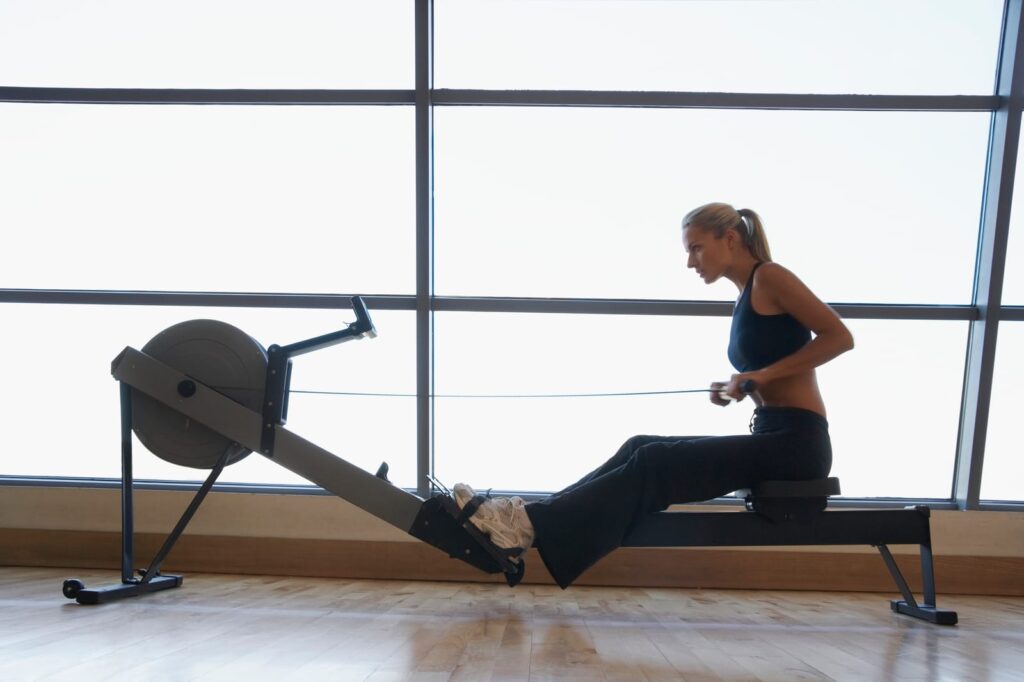
Rowers knee pain
A study by Hosea and Hannafin analysing the injury patterns in rowers from Harvard and Ruthgers universities over three years found knee injuries to be the most commonly occurring injury in rowers.
The majority of this knee pain consists of pain under the kneecap which we refer to as Patellofemoral pain, a tendon injury to the patellar tendon which is connected to the quads muscles or pain on the outside of the knee which comes from irritation of the IT band.
What causes it?
While the structure causing the pain in these injuries vary, the underlying causes to these injuries tend to be quite similar, especially for IT Band injuries and patellofemoral pain, which can often be traced back to the athletes ability (or lack of ability) to maintain control of hip and knee alignment when loading the legs.
Rowing technique
Personally, I feel the origin of knee pain is rarely in the boat or on the ergo, however there are two main exceptions to this.
Steering
The first of these is seen in people who are new to steering or those who are steering particularly bendy courses. The result of this steering motion of the foot, (which in those who are new to foot steering is often excessive) along with the powerful leg drive needed in rowing, results in a lot of force going through a knee which is not in a good position to take that force (think of deadlifting with feet turned in/ out.).
Not driving straight
The second technical fault we see is in rowers who excessively spread their legs at the catch. While this may be thought in order to get a little more reach, driving through spread knees places an increased force on the outside of the knees as well as shifting the load on the kneecap from the part of the joint that’s designed to take it to a part that’s not.
Other causes
Cross training (mainly running)
As you can see from the research above on American Universities, they get a lot of knee pain, something, which really does not add up to what we see in rowers in this part of the world. What these universities have that we do not though is stadiums. One of the most frequently used forms of cross training in US university-rowing programmes is stadium steps and running.
While I have nothing against these forms of exercise, the problem is that rowers, (especially heavyweights) are not designed to be good at them. With this in mind, if a 6 foot 5, 100kg rower asked me if he should run, I would point him towards a couch to 5km programme. My rationale behind this is not that the rower is not carviovascularly fit enough to take on a 10km run, it’s that his joints and muscles have not had the time or the correct training to take that sort of load, and large shifts in loading are among the most common causes of injuries.
Weights
As with all injuries in rowers, one of the most common places to be injured is in the weights room, with some studies showing that up to 40% of all rowing injuries happen in the weight room.
The most common reason I have seen for these type of injuries is poor technique and/ or sacrificing technique to beat a friend.
Top tips for preventing knee injuries
- Avoid peaks in cross training. If you’re going to run for training build it up, or else stick to something with lower impact like the bike.
- Work on hip and hamstring flexibility. If you get this right there’s not need to spread your legs to get a longer stroke.
- Lift what challenges you in the gym. Weights training is to make the boat go faster, not to make you a good weight lifter- Beat your mates on the water instead. If the weight on the rack is tough for you, then it’s the right weight.
- Try some single leg training such as pistol squats and RDL’s to help with your hip and knee control.
Written by: Eoghan O’Connor – Physiotherapist




